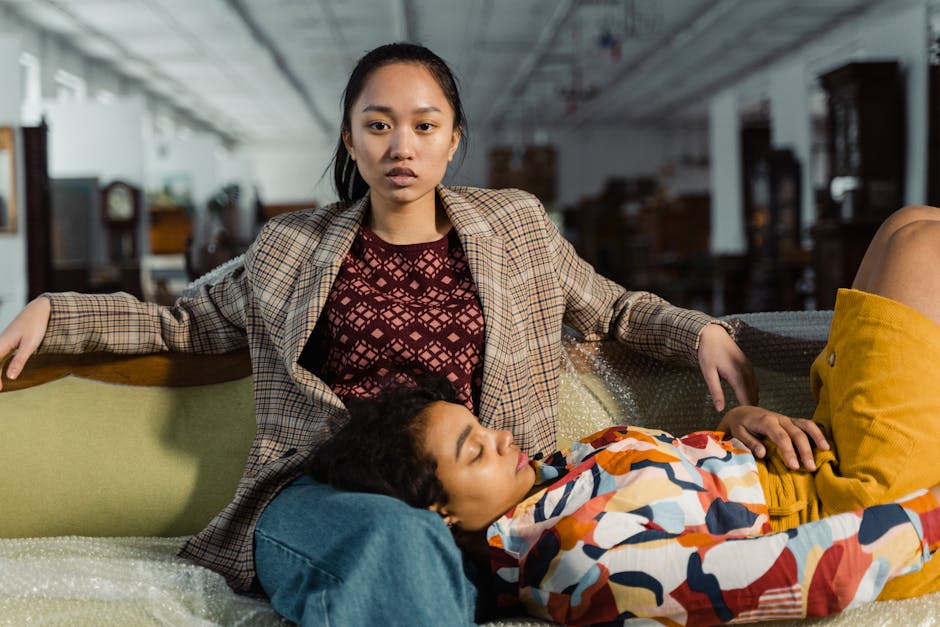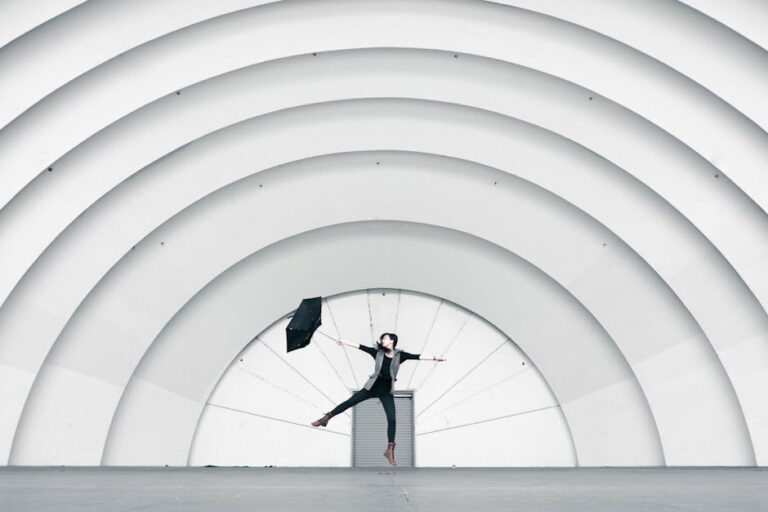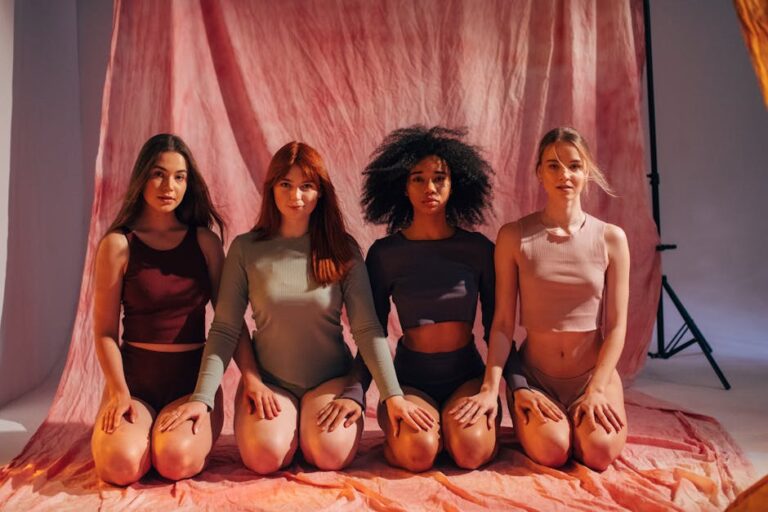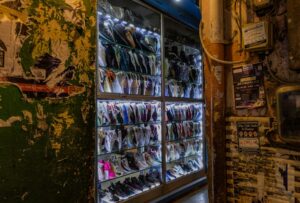Table of Contents
Look, every morning, I fire up my old laptop, the one that’s seen more coffee spills than a roadside chai stall, and the internet just screams at me. It’s always some new face, perfectly lit, talking about a ‘game-changing’ mascara or a ‘must-have’ serum. And everywhere you look, it’s all “beauty lifestyle influencer makeup fashion blogs.” My God, the sheer volume of it all. It’s a whole universe out there, isn’t it? A universe built on filters and sponsored posts, where everyone seems to be living their best life, draped in designer clothes you can’t afford, with skin so flawless it makes you wonder if they’ve ever even seen a pore.
Twenty years in this business, watching trends come and go, I thought I’d seen it all. Print was king, then TV came along, and we all scratched our heads. Now, this digital circus? This whole ‘influencer’ thing, it just exploded. One minute, it’s your neighbourhood girl trying to sell home-made pickles on WhatsApp, the next she’s got a million followers showing off luxury watches. It’s wild, truly. And these beauty and fashion folks, they’re at the top of the heap. They convinced an entire generation that looking perfect, always, is the only way to be. They’ve made careers out of applying lipstick and trying on dresses. And you know what? Good for them, I guess, if they’re making money. But let’s not pretend it’s all sunshine and roses, yeah?
The way I see it, this whole influencer game, especially in beauty and fashion, it’s a big, shiny, expensive mirage. You scroll through Instagram, see these perfectly curated lives, and you think, “Wow, they have it all.” But what are you really seeing? It’s not real life, boss. It’s a performance, a carefully constructed show designed to make you feel like you’re missing out, so you’ll buy what they’re selling. That new foundation, that expensive handbag, that ‘detox’ tea – it’s all part of the act. And people, young kids especially, they fall for it, hook, line, and sinker. They don’t have the cynicism baked into their bones like us old hacks.
Yeh Kya Tamasha Hai? (What is this Spectacle?)
So, how did we even get here? Back in my day, if you wanted fashion advice, you read a magazine. If you wanted beauty tips, you asked your mother or maybe an older sister. Simple, right? Now, you open your phone, and a hundred ‘experts’ are telling you what to do. What’s interesting is, it started small. Just regular people, sharing their OOTDs – ‘outfit of the day’, for those of you not fluent in internet slang – or showing off their latest makeup haul. It felt personal, you know? Like a friend sharing a secret. That was the early magic. That was the ‘authenticity’ everyone talks about. But then, the brands caught on. Oh, did they ever catch on.
Suddenly, those ‘friends’ weren’t just sharing; they were promoting. That lipstick wasn’t just ‘something I picked up’; it was a ‘paid partnership’. The whole thing became a business, a massive, booming industry. And like any industry, it got complicated, and a bit dirty around the edges. Everyone wants a piece of the pie. The genuine connection, that personal touch, it started to evaporate like water on a hot Tawa. It’s all about numbers now – followers, engagement rates, click-throughs. The humanity? Sometimes, it feels like it just went out the window.
The Filtered Truth, Yaar
Let’s be honest. That glowing skin, those impossibly long legs, the perfect hair that never has a single strand out of place? Most of it is digital wizardry. Filters, Photoshop, clever angles, good lighting – it’s a whole science. I’ve seen enough press photos to know that what you see on screen is rarely what you get in real life. These influencers, they spend hours editing, perfecting. They can’t afford to show a bad hair day or a pimple, can they? Their entire livelihood depends on selling this illusion of perfection.
I remember my niece, bless her heart, she was obsessed with some fashion blogger. Said the girl looked like a doll. Then she met her at some brand event. Came back looking totally deflated. “She looks so… normal, Mamu,” she said. “And a bit tired.” And I just thought, ‘Yeah, beta. That’s life.’ It’s a harsh lesson, learning that the flawless world online is mostly smoke and mirrors. But it’s a necessary one. If you’re asking yourself, “Are those beauty products they show really good?” my answer is always the same: it depends. Depends on your skin, your budget, and whether they were paid a lakh to say it was good. Don’t trust everything you see on the internet, especially when someone’s smile looks a bit too wide and their eyes are sparkling just a touch too brightly.
The business model for these people is simple, yet intricate. Brands pay them. A lot of money, sometimes. For a post, a story, a reel, a dedicated video. That’s how these influencers even make money, if you’re wondering. It’s like old-school advertising, but dressed up to look like a friendly recommendation. They get free products, they get invites to fancy launches, they get trips abroad. It’s a sweet deal if you can manage it. But then comes the pressure. The constant need to create content, to stay relevant, to keep up appearances. It’s a treadmill, and if you stop for a second, someone else will run past you. It’s a cutthroat world, even if it looks all glamorous from the outside.
Is Anyone Even Real Anymore?
Everyone, from the smallest wannabe to the biggest superstar influencer, talks about being ‘authentic’. It’s the buzzword, isn’t it? But what does it even mean when you’re being paid to promote something? Can you really be ‘authentic’ when your entire feed is an advertisement? It’s a tightrope walk. Some manage it, some don’t. The ones who connect genuinely, they do well. They build a community. But for every one of those, there are ten others just churning out content, looking for the next cheque.
I often wonder, when I see these folks, how much of their personal life is actually personal? Their whole existence seems to be for public consumption. Their breakfast, their gym routine, their fights with their spouse – it all gets documented. It’s a bit much, honestly. And then, when something inevitably goes wrong, when they mess up, the public reaction is brutal. They’re put on a pedestal, and then torn down just as quickly. It’s a fragile existence. If you’re asking, “How can I tell if an influencer is genuine?” it’s tough, yaar. Really tough. Look for consistency, look for whether they actually use the products they promote, not just show them once. And trust your gut. If it feels too good to be true, it probably is.
Nayi Cheez, Purana Dhoka (New Thing, Old Deception)
The fashion and makeup world thrives on newness. Every season, every month, sometimes every week, there’s a ‘new collection’, a ‘new trend’, a ‘new shade’ you absolutely must have. These blogs and influencers are basically the cheerleaders for this endless cycle of consumption. They make you feel like your perfectly good clothes are suddenly ‘outdated’ or your makeup kit is ‘incomplete’. It’s brilliant marketing, I’ll give them that. They create a desire you didn’t even know you had.
And the cost? Not just the money in your pocket, but the environmental cost, the mental cost. Fast fashion, makeup trends that last a week – it’s a lot of waste. It’s a lot of pressure to keep buying, keep upgrading. And for what? So you can look like the person on your screen, who probably doesn’t even wear half that stuff in their real life? It’s a bit of a scam, if you ask me. Your old editor here has seen enough fashion cycles to know that everything eventually comes back around. Those ‘new’ trends? They’re just old trends with a slightly different tag. Don’t fall for the hype, I say.
The mental health angle of all this is something we don’t talk about enough. Both for the people glued to their screens, comparing themselves to these flawless images, and for the influencers themselves. The constant pressure to be perfect, to be ‘on’ all the time, to deal with criticism and negativity – it’s a lot. I’ve read stories, some tragic ones, of influencers burning out, breaking down. It’s not just a hobby, it’s a job, and a very demanding one at that. And for the audience, especially young girls and boys, seeing only perfection, never a flaw, can seriously mess with their self-esteem. It paints an unrealistic picture of what life should be.
Kal Ka Kya? (What About Tomorrow?)
So, what happens next? It’s 2025. This whole thing, will it just keep growing? Will it burst? Honestly, it’s a bit of both. The digital space isn’t going anywhere. People will always look for inspiration, for advice, for entertainment. But the way it works, that’s going to change. People are getting smarter, more cynical. They’re starting to see through the filters, through the blatant ads. The novelty is wearing off for some.
I think we’ll see more focus on genuine expertise, less on just looking pretty. People want real advice, real skills. Maybe chefs become bigger food influencers than models who just eat salads. Maybe dermatologists become bigger beauty influencers than someone who just has good skin genes. There’ll be more regulation too, I hope. Clearer disclosures about sponsored content. No more sneaky ads hidden in your feed. That’s crucial. “Will these blogs stay relevant in 2025?” In their current form? Probably not entirely. They’ll adapt, or they’ll fade. The ones that survive will be those who figure out how to offer real value, beyond just selling things. The ones who connect, not just convert.
Apna Dimaag Lagao (Use Your Own Brain)
My advice, as always, is simple: use your own brain. Don’t believe everything you see. Don’t let some stranger on the internet tell you what you need to buy to be happy, or beautiful, or successful. If you follow these blogs and influencers, do it for timepass, for ideas, for entertainment. But don’t take it as gospel. Your worth isn’t tied to how many new outfits you have, or how perfectly your eyeliner is winged.
If you’re thinking about getting into this game yourself, maybe starting your own beauty blog, well, good luck, yaar. “Is it tough to start your own beauty blog?” You bet it is. It’s not just about looking good and having a phone camera. It’s about consistency, creativity, understanding your audience, dealing with trolls, and having a thick skin. And you need to be original. Don’t just copy what everyone else is doing. Find your own voice. Tell your own story. People are tired of seeing the same filtered face doing the same sponsored pose.
Ultimately, the digital world, for all its flash and noise, is just a tool. How you use it, how you let it affect you, that’s up to you. Don’t let these perfect, polished images make you feel less than. Your real life, with its imperfections and its chaos, is probably a lot more interesting anyway. Go out, live a little, spill some coffee on your laptop. It builds character, you know? And that’s something no filter can replicate.












